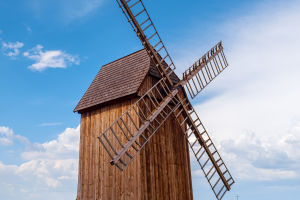Pine trees, classified as coniferous trees, thrive in a wide range of climates, from the frigid arctic circle to the scorching tropics. They are known for their tall, straight stature, featuring upright trunks and dark green, needle-like leaves. One of the remarkable attributes of pine trees is their ability to anchor the soil effectively, thus preventing erosion.
With their distinctive characteristics, pine trees capture the attention of observers.
Firstly, they remain evergreen throughout all seasons. While most trees shed their leaves during the cold winter months, pine trees steadfastly stand on the frozen ground, emanating a resolute and unwavering aura. The perpetual greenery symbolizes the perpetuation of life and enduring vitality.
Secondly, pine trees are regarded as symbols of resilience. With their upright and unwavering trunks, they withstand gusty winds and heavy rainfall, demonstrating their resilience in the face of storms or snowfall.
This unwavering spirit serves as an inspiration, teaching us the importance of perseverance, fearlessness in the face of hardship, and the courage to forge ahead.
Pine trees hold tremendous significance as the primary tree species in the northern hemisphere. Particularly in temperate regions, numerous pine species populate vast forests, earning them the moniker "mother of forests in the northern hemisphere."
Adaptability characterizes pine trees in terrestrial environments. They exhibit an impressive tolerance for temperatures as low as -60°C or as high as 50°C. Additionally, pine trees can thrive in various types of soil, including mineral soils, sandy soils, volcanic ash, and calcareous soils. Renowned as pioneer trees, they endure drought, infertility, and strong sunlight.
Evergreen conifers and pine trees showcase their perpetual greenery year-round, with an even more vibrant display during winter. This phenomenon can be attributed to their evolution and specialized leaf structures. Let us explore these factors more closely.
Primarily, pine trees maintain year-round greenery due to their long-standing adaptation to environmental evolution. Native to boreal and temperate regions, where seasonal shifts are pronounced, plants must contend with the stress imposed by extreme changes.
Through extensive natural selection and evolution, pine trees have developed the ability to remain evergreen, facilitating photosynthesis during the cold winter while enabling rapid growth in spring and summer.
Unlike other tree species with broad leaves, pine trees possess elongated, slender needles. This leaf structure enables them to thrive in arid and cold environments. Needle-shaped leaves have a reduced surface area, resulting in less transpiration and water loss, thereby aiding water retention in arid conditions.
Simultaneously, the smaller surface area of needle-shaped leaves limits exposure to the environment, minimizing water evaporation and heat dissipation. This adaptation reduces water loss in colder climates.
Pine trees exhibit exceptional adaptability, ranging from their resilience to various climates to their ability to prevent soil erosion. They captivate observers with their evergreen presence and serve as symbols of perseverance.
Furthermore, their significance as the dominant tree species in the northern hemisphere and their adaptability to diverse terrestrial environments contribute to their remarkable stature.
The evergreen nature of pine trees, coupled with their specialized leaf structures, can be attributed to their evolution and the necessity to thrive in challenging environments.


